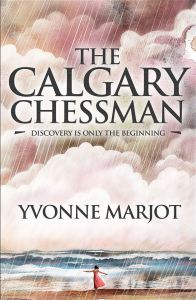
I read a lot of Nevil Shute as a youngster – growing up in New Zealand, it was natural that his books should be in the library. I enjoyed them; he writes a good yarn, with plenty of action and interesting storylines, and his characters are strong and memorable, particularly the women. But it’s decades since I last read him, and the one I’m reading now I have never read before.
Requiem for a Wren is an exemplar of Shute’s work, and in particular his skill in purveying vast amounts of background through a few terse sentences. He’s a master at providing information without the reader being at all conscious that he’s doing so.
In the first paragraph of Requiem nothing much is happening. The narrator is an airline passenger, and the plane is beginning to descend. But look at how much information he packs into the first two sentences.
There was a layer of cumulus, about seven-tenths, with tops at about five thousand feet as we came to Essenden airport; we broke out of it at two thousand and we were on the circuit downwind, with the aerodrome on our starboard wing. I sat with my eyes glued to the window looking out at Melbourne, because this was my home town and I had been away five years.
I don’t mean the obvious – cloud cover and all – but rather the great deal of information which is implied. We now know that our narrator is Australian, and that he is an airman (very likely a pilot, given the breadth and complexity of his observations). As the book was published in 1955, the ‘five years’ remark gives us a pretty big clue that he was away at war, so now we know what kind of airman he is.
[The stewardess} smiled and said quietly ‘Would you like any help down the gangway, sir?’
I shook my head. ‘I’ll wait till the others are off. I’m all right if I take my time’
So… an injury or disability bad enough for him to potentially need help, but she is circumspect and he determined to be independent. That makes me think straight away about wartime injuries – and it turns out that’s exactly right. He goes on to meet the foreman from his parents’ sheep station, and discovers that there has been a death at the farm, but even then he’s more interested in the changes in the landscape since the war.
It’s only on page 12 that we begin get a sense of his injury, and this too is in typical laconic style.
Horses were still used by the boundary riders, but … my father drove all over the property in a Land Rover instead of riding on a horse as he always had when I was young. That suited me, for artificial feet are something of a handicap upon a horse. There was a great deal for me to learn about the property before I could unload some of the work from my parents, and I was keen to make a start.
Shute’s style is one I favour, with long passages of narrative interspersed with briefer dialogue and conversation. It’s somewhat out of fashion these days, when we are all being told ‘do, don’t tell’ and ‘don’t infodump’, although in Shute’s case it’s more like info-infusion, and his laid-back style suits the subject. Our protagonist is reluctant to display his disability, or any of the other ways in which war has changed him, and it becomes increasingly clear that this same reticence applies to the other characters in the novel, including the dead girl, whose story rapidly takes centre stage. So much is conveyed in these sparse, careful sentences that by the time he reaches the revelation at the bottom of page 53, it comes with a sense of inevitability. It could only have been this way.
I’m not going to tell you the story. Not all of you will want to read the book, but you can read the first few pages online. Have a look, and see whether you have anything to learn from this master of understated prose.


Recent Comments